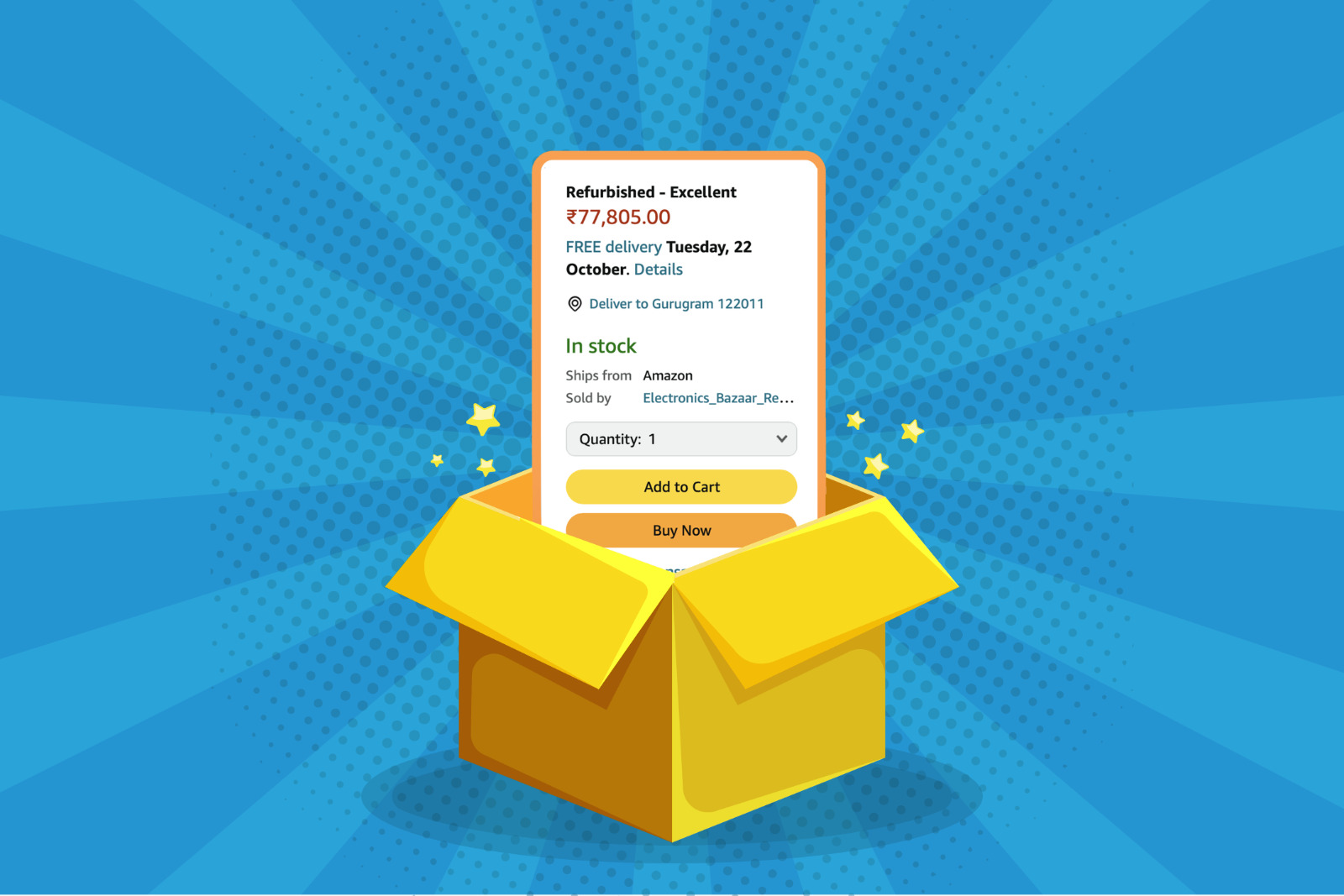You have to start your journey as a seller on Amazon, the largest e-commerce website worldwide, with the Seller Central portal. The Amazon Vendor Central platform is available for sellers only through invitation by Amazon.
Therefore, as a first-time Amazon seller, you don’t get to choose between the two.
But, understanding the differences between Amazon vendor central vs. seller central is necessary as a seller on the Amazon e-commerce site. It can help you to become a well-informed seller making the correct choices for your online product sales and marketing decisions on the platform.
Firstly, it’s essential to know each of these platforms from Amazon and comprehend their offerings.
Amazon Seller Central & Its Offerings
As a new merchant, you must use the Seller Central portal to sell your products through Amazon. This portal lets you sell directly to retail customers visiting Amazon. When you use this platform, you are a third-party seller for Amazon.
In order for you to join the Seller Central marketplace, you have to select an individual membership or a professional one. The professional membership comes with a fee but gives you added features to use.
When you compare Seller Central vs. Vendor Central, Seller Central allows you to manage your own Amazon store. You can control right from launching your product to managing the returns for your customers in Seller Central.
Let’s delve deeper into the offerings of Seller Central, which are as follows:
- You can sell directly to customers visiting the Amazon e-commerce marketplace.
- The Amazon Seller Central account is in your control, and you can decide what items to sell on this platform.
- Anyone who wants to sell a product can join Seller Central vs. Vendor Central, which is by invitation only.
- On Seller Central, you can decide the retail price of your products.
- You have the flexibility to choose your third-party logistics partner for deliveries, known as Fulfilled by Merchant (FBM).
- By signing up for their Fulfilled by Amazon (FBA) program, you can work with Amazon as your logistics partner.
- You control and spend for the product launching advertising programs.
- The responsibility and decision to maintain the optimum inventory level are yours in Seller Central’s e-commerce marketplace.
- You get limited assistance with marketing tools from Amazon Seller Central vs. Vendor Central if you don’t take up a paid professional membership.
- Get your payments securely deposited to your account quickly with the Amazon Seller Central portal.
Amazon Vendor Central & Its Offerings
If you are already selling your products in Seller Central, Amazon buyers may ask you to join the Amazon Vendor Central platform through invitation. Unfortunately, you cannot join Vendor Central directly.
Before expressing their readiness to work with you and showing any interest in your company products or brands, Amazon utilizes an algorithm to include its Vendor Central providers.
When Amazon invites you to join Vendor Central, you will be a first-party seller for them. It means that the purchasing team from Amazon will pick up larger quantities of your product from you. As a result, you will be selling your items at a reduced margin to them.
Then, Amazon will price and sell the products directly to retail customers through Vendor Central vs. Seller Central, where you can decide the retail price.
Here is what the e-commerce marketplace Vendor Central from Amazon offers:
- As a supplier in Vendor Central, you sell your products in bulk to Amazon, keeping lesser profit margins.
- Amazon sells your products to retail customers on their e-commerce platform when you are part of Vendor Central.
- You are a wholesale seller on this platform, and you cannot determine the retail selling price as Amazon will decide that price for customers.
- In this e-commerce marketplace, Amazon is responsible for all the logistics of shipping and delivery of the goods.
- Amazon Vendor Central India is available for joining only when you, as a seller, get invited by Amazon.
- As a member of Vendor Central, you get access to the Amazon Retail Analytics tool to monitor the sale performance of your products.
- Your products will get advertised on Amazon with Vendor Central.
- You can even create your product ads with the help of Amazon Marketing Services (AMS).
- When your product gets listed on the e-commerce platform with a tag stating “Ships from and sold by Amazon,” it means that it is part of Vendor Central.
Differentiating Amazon Vendor Central vs. Seller Central
When it comes to comparing Amazon Vendor Central vs. Seller Central as your preferred e-commerce market place there are several differences that you need to consider, and they are as follows:
1) Product Pricing Management:
When you are selling your goods to customers, it is vital that you make profits from the transaction. It means that you should be able to determine the retail price of your products to make your target profit.
One of the most significant discussion points for differentiating these services Amazon offers to sellers is retail price management.
On comparing Vendor Central vs. Seller Central, the Seller Central platform gives all the control in your hand as the seller of your merchandise. You get to decide the final price of your products which will get listed on the Amazon e-commerce site. Customers have to purchase the item as per this set retail price.
However, when it comes to Vendor Central, it is Amazon that will determine the retail listing price of the products. On this platform, you are a supplier that sells large quantities of goods to Amazon at wholesale prices.
2) Inventory Management:
One of the factors you need to consider while comparing Amazon Vendor Central vs. Seller Central is the inventory management rules.
With Vendor Central, there are stringent rules and regulations for managing inventory levels. Therefore, you must maintain an optimum inventory level while participating in this platform. Inability to do so can cost you fees or chargebacks that will affect your overall profits.
Seller Central gives you more control over the management of your product inventory. For example, you can decide how much stock to maintain and where. Moreover, you can even choose to store your inventory with FBM or FBA based on which would cost the least. This way, you can reduce your cost and increase profits.
3) Brand Credibility:
Your product gains more credible branding when you are an Amazon Vendor Central India member. It is because the products listed on the Amazon e-commerce site display the chosen merchandise tag from Amazon.
Customers will likely feel more confident purchasing an item branded and sold by Amazon rather than a third-party seller with less brand awareness.
Selling your merchandise through Seller Central gives you more control to create your brand image, which is beneficial in the long run.
4) Logistical support:
Even though you can get logistical support for both platforms, the former can provide better assistance compared to Vendor Central vs. Seller Central.
For Vendor Central members, the entire customer support and returns logistics are taken care of by Amazon.
The only logistics you have to manage when you are an affiliate with Vendor Central is ensuring an adequate supply of products to Amazon. Therefore, working with Amazon via the Vendor Central portal is simpler than via the Seller Central platform.
5) Marketing Management:
Being a member of Vendor Central, you get access to marketing campaigns like sponsored ads, products, and displays. You even get to work with the help of AMS, which can boost your product advertising by creating user-generated content.
Amazon Vendor Central India allows you to participate in Amazon Vine and subscribe & save services where expert reviewers will provide feedback on your products before it appears on the Amazon e-commerce marketplace.
Working with Seller Central, you are responsible for creating and marketing your products. Therefore, you must continuously improve and develop new ideas to promote your merchandise in your e-commerce store.

Conclusion
In brief, Seller Central is your starting point to becoming a part of the Amazon e-commerce marketplace. It gives you more control over managing your products and selling directly to retail customers.
Vendor Central, on the other hand, gives less control but more brand visibility. It also gives you fewer logistical management issues, but you have to sell your products only to Amazon rather than the retail customer.
While you are differentiating Amazon Vendor Central vs. Seller Central, all the above points must be considered.









